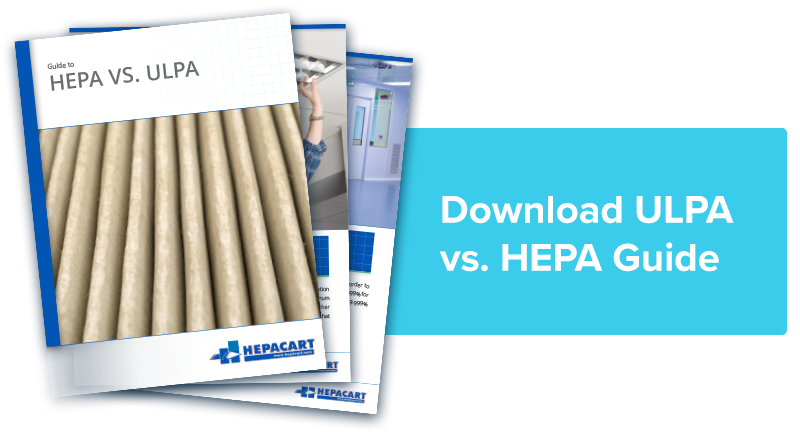When it comes to meeting with strict dust containment regulations in high-risk environments, air filtration is an essential piece of any plan. But how do you know if you are choosing an air filter that actually meets the standards you need? One question that often comes up is the terminology of ULPA vs. HEPA filtration. These two types of air filters may be marketed as equivalent, but are they really the same thing? And does an ULPA filter offer the caliber of filtration that you need?
What is an ULPA Filter?
Before going forward, it is important to understand how the ULPA designation differs from that of a HEPA filter. The acronym ULPA stands for Ultra Low Particulate Air. (As a refresher, HEPA stands for High-Efficiency Particulate Air). ULPA filters are defined as those that are able to filter 99.999% of particles that measure less than 0.12 microns, making it technically more effective than a HEPA filter on a strictly percentage basis since the same statistics for a HEPA filter are 99.97% of particles 0.3 microns or smaller being filtered.
Are HEPA and ULPA Equivalent?
It can be tempting to think that if ULPA is is inherently more efficient that HEPA, that those filters should be easily interchangeable when it comes to dust containment. Unfortunately, it is not that easy. A filter that can filter more particles is not always going to be the best choice. The issue often comes down to air changes per minute. The air changes per minute (ACH) is a measurement of how many times the air in a room is completely filtered and changed out. Most containment regulations for healthcare facilities or clean rooms and suggestions from organizations like the CDC require a certain ACH rating. Because ULPA filters capture more particles in the air, they allow less air to pass through. That means that with the same level of negative air pressure, less air is filtered per minutes, resulting in fewer ACH.
Further, HEPA filters are specifically designed to capture as many particles at the size 0.3 microns for a reason: these particles are some of the most difficult to filter. By rating for these specific particles, we know that these troublesome particles are being filtered as efficiently as possible. Because ULPA uses a different standard, these 0.3-micron particles are no long the focus. While logic might say that means even more particles are being filtered out, that's just not the case when dealing on this scale. Just because they promise to filter more particles does not mean they are more effective.
Know Your Containment Regulations
It is impossible to say which type of filter will meet with containment regulations for any individual project because these types of standards are often determined on a facility basis. Consult any and all containment regulations for a facility before beginning and project or investing in any air filter.
For more details of how ULPA filters compare to HEPA, download our free comparison guide.
